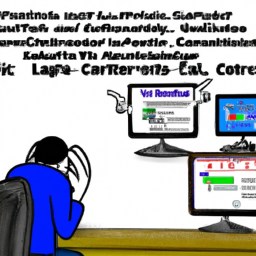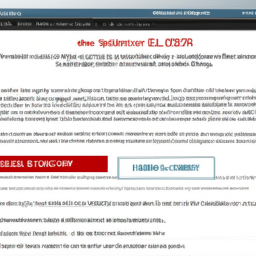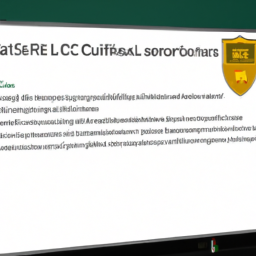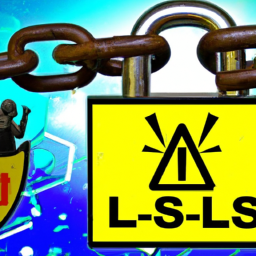In the race to provide the best user experience, your website’s loading time can be the difference between winning and losing. Think of your server as the conductor of an orchestra, coordinating the harmonious delivery of content to your users. But what happens when the conductor is late to the performance? The impact is not only frustrating, but it can also have detrimental effects on your users’ experience.
Server delays, caused by various factors such as high traffic, poor server hardware, or inefficient coding, can be a major roadblock to a seamless user experience. Slow loading times can lead to increased bounce rates, decreased conversions, and ultimately, a loss of revenue for your business.
Understanding the impact of server delays on user experience is crucial in today’s digital landscape. By analyzing server performance, monitoring load times, and implementing strategies to mitigate delays, you can ensure that your users receive content promptly and efficiently.
In this article, we will delve into the factors contributing to server delays, explore the negative effects on user experience, and provide actionable strategies to improve loading times. By continuously monitoring and improving your server performance, you can future-proof your website and provide an exceptional user experience that keeps visitors coming back for more.
Key Takeaways
- Server delays can negatively impact user experience and lead to increased bounce rates and decreased conversions.
- Factors contributing to server delays include high traffic, poor server hardware, and inefficient coding.
- Fast loading times are crucial for optimal user experience and maximizing conversion rates.
- Strategies to mitigate server delays include optimizing code and investing in robust server infrastructure.
Importance of Fast Loading Times
When it comes to the impact of server delays on your overall user experience, one cannot overstate the importance of fast loading times. User satisfaction and conversion rates are directly influenced by the speed at which your website loads.
Numerous studies have shown that users are more likely to abandon a website if it takes more than a few seconds to load. In fact, a one-second delay in page response time can result in a 7% decrease in conversions. Slow loading times not only frustrate users but also lead to a loss in potential customers.
To ensure optimal user experience and maximize conversion rates, it’s crucial to prioritize fast loading times.
Now, let’s delve into the factors contributing to server delays.
Factors Contributing to Server Delays
The myriad of factors that lead to server delays can significantly impede a smooth and seamless digital journey.
Network congestion is one such factor that can cause delays. When there’s a high volume of data being transmitted over a network, it can result in congestion and slower processing times.
Additionally, hardware limitations can also contribute to server delays. Outdated or inadequate hardware may struggle to handle the demands of processing and transmitting data, leading to delays in response times.
These delays can have negative effects on user experience, such as increased frustration and decreased productivity.
Understanding the impact of server delays on user experience is crucial for businesses to prioritize optimizing their server infrastructure and ensuring efficient data transmission. This will ultimately lead to a more positive and satisfying digital experience for users.
Negative Effects on User Experience
Imagine yourself trying to navigate a website or application, only to encounter frustratingly slow loading times and unresponsive buttons, ultimately hindering your overall satisfaction and productivity. Server response time is a critical factor in determining the user experience, and when it is delayed, it leads to several negative effects:
-
User frustration: Slow loading times and unresponsive buttons can lead to heightened frustration levels, causing users to abandon the website or application altogether.
-
Decreased engagement: Users are less likely to engage with a website or application that has slow server response times. This can result in reduced page views, lower session durations, and decreased overall engagement.
-
Negative impact on productivity: Slow server response times can hinder users’ ability to complete tasks efficiently, leading to decreased productivity and potentially impacting their ability to meet deadlines or achieve desired outcomes.
Understanding these negative effects highlights the importance of addressing server delays. By implementing strategies to mitigate server delays, such as optimizing code and investing in robust server infrastructure, we can enhance the user experience and improve overall satisfaction.
Strategies to Mitigate Server Delays
To enhance the overall satisfaction of users, implementing strategies to mitigate server delays involves optimizing code and investing in robust server infrastructure. By utilizing caching techniques, commonly used data and files can be stored in temporary storage, reducing the need for frequent server requests. This significantly improves response time and minimizes delays. Load balancing methods distribute incoming network traffic across multiple servers, preventing any single server from becoming overwhelmed and causing delays. This ensures a smooth and seamless user experience even during peak usage periods. By incorporating these strategies, you can significantly reduce server delays and provide a faster and more reliable service to your users. In the next section, we will discuss the importance of monitoring and analyzing server performance to further optimize user experience.
Monitoring and Analyzing Server Performance
You can monitor and analyze how well your server is performing by examining its efficiency and responsiveness. To optimize your server’s performance, you need to gather and analyze performance metrics. Here are five key areas to focus on:
-
Server response time: Measure the time it takes for the server to respond to requests, aiming for faster response times.
-
Throughput: Analyze the number of requests your server can handle simultaneously to ensure efficient processing.
-
Error rates: Monitor the frequency of server errors to identify and address any issues promptly.
-
Utilization: Keep track of CPU and memory utilization to ensure optimal resource allocation.
-
Network latency: Measure the time it takes for data to travel between the server and the user to identify potential bottlenecks.
By continuously monitoring and analyzing these performance metrics, you can identify areas for improvement and future-proof your server’s performance.
Transitioning into the next section: To continuously improve and future-proof your server, it’s important to implement strategies that prioritize server optimization.
Continuous Improvement and Future-proofing
With continuous monitoring and analysis of performance metrics, you can identify areas for improvement and ensure your server’s long-term efficiency and reliability. Continuous improvement is essential to keep up with the ever-evolving demands of users and technology.
By regularly evaluating server performance, you can identify bottlenecks, optimize resource allocation, and enhance response times. Scalability planning is crucial to future-proof your server, ensuring it can handle increased traffic and workload without compromising performance. This involves assessing current capacity and projecting future needs, then implementing strategies such as load balancing and horizontal scaling.
Additionally, staying up to date with the latest technological advancements and trends can help you proactively adapt and optimize your server’s performance. By embracing continuous improvement and scalability planning, you can optimize user experience and ensure your server can handle the demands of today and tomorrow.
Frequently Asked Questions
How does server delay impact website ranking on search engines?
Server delay significantly impacts website ranking on search engines. The importance of server response time in SEO can’t be overstated.
Slow loading times due to server delays lead to poor user experience, high bounce rates, and decreased organic traffic. Search engines prioritize fast-loading websites as they provide a better user experience.
Websites with faster server response times have higher chances of ranking higher in search engine results pages, ultimately improving their visibility and attracting more organic traffic.
Can server delays lead to higher bounce rates and lower conversion rates?
Server delays can have a significant impact on bounce rates and conversion rates. Slow server response times directly affect website speed, leading to frustrated users who are more likely to leave the site without taking any action.
Studies have shown that even a one-second delay in server response time can result in a 7% reduction in conversions. Additionally, high bounce rates can negatively impact search engine rankings, further decreasing organic traffic and potential conversions.
It’s crucial to address server delays to optimize user experience and maximize conversion rates.
What are some common causes of server delays that are often overlooked?
Overlooked causes of server delays include network congestion and insufficient server resources.
Network congestion can occur when there’s a high volume of traffic on the network, leading to slower data transfer.
Insufficient server resources can result from inadequate processing power, memory, or storage capacity, causing delays in serving requests.
These causes are often overlooked but can have a significant impact on user experience, leading to frustration and potentially higher bounce rates and lower conversion rates.
Is there a correlation between server delays and customer satisfaction?
There is a strong correlation between server delays and customer satisfaction, which in turn affects customer loyalty.
Studies have shown that customers have high expectations for quick server response times, and any delays can lead to frustration and dissatisfaction. Slow server response times can result in increased bounce rates, decreased conversion rates, and negative online reviews.
Therefore, it’s crucial for businesses to prioritize optimizing server performance to ensure a positive user experience and maintain customer loyalty.
What are some best practices for optimizing server performance to reduce delays?
To optimize server performance and reduce delays, there are several best practices you should consider.
First, focus on optimizing server response time by minimizing network latency and maximizing server processing speed. This can be achieved through techniques such as caching, load balancing, and code optimization.
Additionally, regularly monitor server performance using tools like performance monitoring software to identify bottlenecks and make necessary improvements.
By implementing these practices, you can significantly enhance server performance and provide a seamless user experience.
Conclusion
In conclusion, understanding the impact of server delays on user experience is crucial for any online business. Fast loading times are imperative as they directly affect user satisfaction and engagement.
Factors contributing to server delays, such as network congestion or inadequate resources, should be promptly addressed to avoid negative effects on user experience. Continuous monitoring and analysis of server performance are essential to identify and resolve issues efficiently.
By implementing strategies to mitigate server delays, businesses can ensure a smooth and enjoyable user experience, akin to a well-tuned orchestra performing in perfect harmony.
















































































































